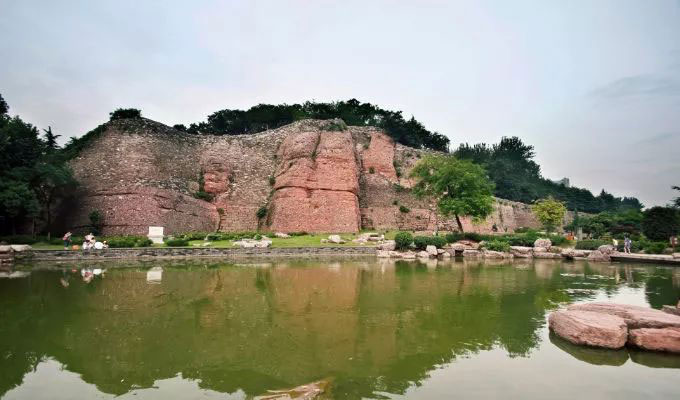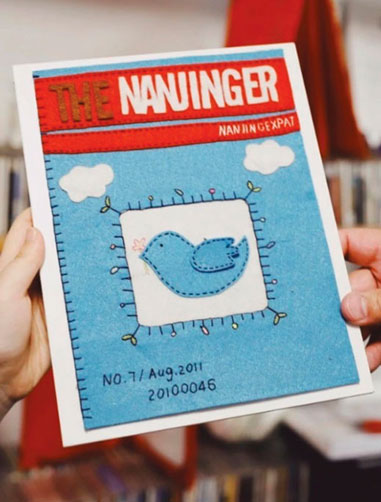Nanjing comes tops for a number of things at a global level; longest city wall and oldest wooden Buddhist temple being just two. Today, we add to that list the city that has changed its name more than any other. For Nanjing has gone by no less than 70 other names throughout history, thus thoroughly trouncing Beijing with her paltry 30 name changes.
So shall we just start, as they say, from the beginning?
Two facts to get us going:
- Many a street name in Nanjing is derived from being one of the former, ancient names for our fine city;
- Changes to the city’s name generally coincided with a change in dynasty or kingdom.
Nanjing’s earliest urban construction dates back to the Spring and Autumn Period (春秋) of more than 2,500 years ago. During this time, Fuchai, the last emperor of Wu Kingdom, built Tu City (土城) on a small hill in the west of Nanjing, and called the area Ye City (冶城), on account of the meaning of the character “ye” (冶), to smelt, since there were abundant copper, tin and bauxite deposits in the southwest of Nanjing at that time. As indispensable smelting raw materials for the casting of bronze weapons, so the city’s first name appeared.
In the Warring States Period (战国), the King, Chuwei, was deluded by the deceptive words of the local scholars. In order to prevent people from stealing his emperor in the future, he buried gold effigies in the countryside in the east of Lion Mountain as a protection of his position, built a city on Stone Mountain, and named it Jinling (金陵). With jinling also seeing the origins of the city’s military capabilities, the name is still very much synonymous with Nanjing today; jinling Hotel, jinling Evening News, jinling Beer, etc.
Nanjing later became known as Moling (秣陵) because in 210 BCE, the last time Emperor Qin Shihuang journeyed the southeast, he was accompanied by fortune tellers who saw the dangerous terrain around the jinling Tomb and said to Qin that 500 years later, there would be royal uprising in jinling. Qin was furious, and immediately sent people to cut off the ridges of Fang Shan and make the Huai river, a major tributary of the Yangtze, run through jinling before rejoining the Yangtze, to release any royal aurora. In fact, Qin was so unimpressed that he went so far as to change the city’s name to Moling (秣陵), with “mo” (秣) as in “fodder”; in his eyes, jinling was only a suitable place for animals’ fodder. Today’s fodder in Nanjing can be found on Moling Lu in Xinjiekou and in Moling, a subdistrict of jiangning.
During the Three Kingdoms Period, Founder of the state of Shu Han, Liu Bei, persuaded his counterpart of the Eastern Wu, Sun Quan, to move his capital to Moling and rename it Jianye (建业), they being temporary allies in the fight against the third kingdom, led by Cao Cao.
At this point, Nanjing’s famous Stone City (石头城) made a surprisingly brief appearance as Nanjing’s moniker, largely simply on account that Sun thought it was kind of cute, given the city’s location on Stone Mountain, before common sense prevailed and Jianye (建业) was again restored.
So far, so good. But then the three kingdoms were united and the names for Nanjing started coming thick and fast.
In 280 CE, Wang jun of the Xijin Dynasty occupied Jianye (建业) and changed the name back to Moling (秣陵), but then had second thoughts, settling on Linjiang (临江). For his next trick, the following year, he split Linjiang into Jiangning (江宁) and Jianye (建邺), with the Qinhuai River as demarcation that is still, by and large, in use today.
After the last emperor of the Western jin Dynasty, Sima Ye, assumed the throne, he changed the city name to Jiankang (建康) in order to avoid his name. jiankang also became the unanimous choice for the Eastern jin Dynasty and the Southern and Northern Dynasties. Also, you can find Jiankang Lu in south part of Nanjing now.
Then came the reunification of China in the Sui Dynasty, when upon Emperor Sui Wendi ordered, “jiankang City, flatten the palace, till and reclaim”, meaning that the entire city should be levelled into farmland. His intention was twofold; to make people forget that it was the ancient capital of a former dynasty, and to avoid it being occupied by another emperor. A name change was naturally in order too; Jiangzhou (蒋州).
Then came the Anshi Rebellion of the Tang Dynasty, after which the government upgraded jiangzhou’s status, giving it the more appropriate name of Shengzhou (昇州), Today’s Shengzhou Lu (升州路) in Nanjing references this, while using the simplified Chinese character.
In the Yuan Dynasty, the city’s moniker was changed to Jiqing (集庆), meaning “celebratory gathering” because it was a double celebration for Yuan Wenzong, granted King of Huai and promoted to emperor of the nation. Jiqing Men that was opened in the 1990s pays tribute to this time.
Finally our friend Nanjing enters our tale. It was Founder of the Ming Dynasty, Zhu Yuanzhang, who gave the city the name it retains today. Yet, that would be too easy. In the Qing Dynasty, a penultimate name change gave us Jiangning (江宁) again. It was to remain thus until the Xinhuai Revolution of 1911 that led to Sen Yat-sen establishing the Republic of China the following year.











